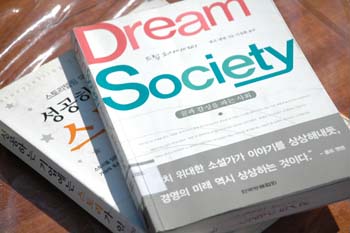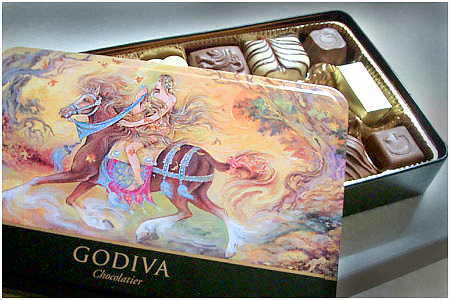For the sake of stories inside brands and advertisements
SPARKLING WITH imagination, Anne of Green Gables had a magical talent to transform an ordinary object into a special one. Endowing particular significance and meaning to every object she encountered, she had a unique way of looking at objects. The land she walked on was not the same as what others stood on, and even the air she breathed was not same as others'. Through Anne’s eyes, she could even make a broken mirror look beautiful, or a naked tree turn into a snow queen. Her view of the world depended on the stories that lay underneath. Like Anne of Green Gables, businesses grant special meaning to seemingly ordinary products by telling stories to the audience. Let’s take a glimpse into such marvelous storytelling in today’s modern world!
Modern-day storytelling
Everyday we engage in storytelling - the act of telling interesting stories to an audience. Not a day passes by without a story, be it fiction or non-fiction. Such a process of exchanging words is actually a way of fostering the growth of one’s “self.” “By exchanging a variety of stories and incidents, individuals learn ways to deal with certain situations,” comments Choi Hye-sil (Director of the Culture & Content Research Center), “Telling stories are pretty much instinctive as well as vital for people.” Moreover, according to Robert Frank of Economic Thinking, people tend to remember, understand, and become more interested when stories are involved. Thus, people naturally prefer dramatic stories over impersonal explanations or information. “In modern society, people do not want abstract information,” comments Choi. “Since people’s values have diversified, more specific examples and stories are necessary to represent different situations.”
The more society becomes digitized and high-tech, the more people embrace humane values and emotions. “As the society gradually turns somewhat arid, people seek emotional and ideal values, such as dreams,” comments Hong Sa-jong (Pres. of Meerae Imagination Institute). “The ‘Dream Society’ follows the ‘Information Society,’ and stories are now the core of every industry.” The term, Dream Society, was first coined by a futurologist from Denmark, Rolf Jensen. According to Jensen, Dream Society is where stories, dreams, and emotions contain much importance and marketing becomes more than just sales of product. A significant aspect of a Dream Society is that the successful sale of a product is dependent upon the story it tells. Therefore, as stated by Jensen, businesses and industries must strive to deliver dreams and stories to consumers in order to survive in the Dream Society.

Storytelling marketing in the Dream Society
The harmony of storytelling and marketing has resounded beautifully in the Dream Society. This perfect match lies in the fact that both storytelling and marketing share the same purpose. Storytelling is an efficacious medium to deliver messages while marketing serves to inform the customers of a product effectively to increase sales. Then what exactly is storytelling marketing? Storytelling marketing contains a variety of forms. For example, combined with marketing, storytelling relates to episodes, real events, “dream-keting,” and so on. Advertisements, a form of marketing, utilize storytelling to successfully convey messages to consumers. Moreover, storytelling in marketing and advertisements not only provides information about the product, but also creates new trends, entertainment, or topics interesting enough to get people talking. One successful example of storytelling advertisements is “Impossible is Nothing,” an advertisement campaign for Adidas, a worldwide sports brand. This advertisement campaign contained over 30 episodes of internationally famous sports players who shared the difficulties that they overcame. Adidas was effective in sending a message of hope as well as increasing its brand awareness. The phrase, “Impossible is Nothing” became so widespread and well-known to people that they began to create versions of their own, by linking their own goals to the original message.

Stories told within commercials
* To improve corporate image
Since certain stories in advertisements draw people’s attention and move them emotionally, storytelling methods have long been utilized by businesses for various purposes. One of the purposes is to improve the corporate image. In Korean society currently, major electronics and IT industries have been especially enthusiastic with storytelling techniques. The “Like a family” series of advertisement by Samsung Electronics deals with a series of episodes related to a child named Hoon (derived from an adjective, Hoon-hoon, which means “heartwarming” in Korean) and his parents. By telling a story to seek empathy from its viewers, Samsung Electronics emphasized the humanitarian characteristics of its business; basically, the commercial serves well to emphasize the humanitarian side of Samsung.
* Ideals and goals of consumers
Other than just improving a corporation’s image, diverse storytelling tactics of businesses, such as “dream-keting,” targets the fundamental characteristics of people. “Dream-keting,” a combination of “dream” and “marketing,” appeals to people’s tendency to dream for ideals. Just as Jensen suggested, selling “dreams” has become one of main goals for businesses in the Dream Society. Companies focus on creating the ideal image that customers yearn for. For instance, Chanel, a prestigious fashion and cosmetics brand of France, published an autobiography of Coco Chanel, the founder of the brand. The book basically functions to ameliorate the design concept of the brand, which includes modernity of women. It rebels from the classic feminine style by creating a simple, modern but elegant aura. “By illustrating the ideal model that many female customers admire, Chanel succeeded in accentuating their intended image,” explains Choi. The example of Chanel stems from the philosophy of the CEO, Coco Chanel; yet, many luxury brands target customers’ ideals by sublimating their products as an ideal or a dream.
 | ||
*Combination of fact and fiction
In other cases, businesses adopt real events and create them into “faction,” a compound word for “fact” and “fiction.” Such stories based on real life tend to gain sympathy among the viewers. “Among those numerous advertisements, what I thought was the most moving was the advertisement based on a true story,” says Hwang Ji-hea, a manager at Brandstoryland, “ ‘Toward People’ corporate PR series from SK Telecom seems to be a representative case in point.” In half a minute, such real events used in the commercials pull the heartstrings of the audience. Derived from a real story, the ‘Toward People’ series evoke long-buried and sensitive emotions. For example, by showing a heartbreaking episode of a father who lost his daughter, the story arouses sympathy within people and reminds them of the genuine value of family. Such poignant commercials often inspire discussions, and as a result, the advertisement could long remain in consumers’ minds.
 | ||
Stories from the viewers: Real Dramas in advertisements
Consumers’ active contribution to the episodes and ideas are vital for such successful advertisements. Starting in September 2007, SK Telecom has launched a website to take in customers’ stories. In short, the advertisement industry is giving an ear to people’s own experiences. Likewise, other than mere complaints of certain products as feedback and interaction, the real experiences of customers are beginning to function as source of ideas for advertising. Brandstoryland is a website where customers freely write about their impressions and experiences related to certain brands. “By listening to customers’ stories and experiences related to certain brands, businesses can receive ideas for effectual commercials and interesting concepts of brands,” comments Hwang. Customers could tell their own stories, and also obtain the opportunity to contribute to the company. Thus, such marketing allows the customers to not just stay as a passive receiver yet as an active consumer. It also helps them to take a different perspective on the world, by letting them realize numerous brands they use in everyday life. An example of brand stories created by customers is an episode that is likely to be spotted in real life. When a couple went on a date to Starbucks, the guy kept complaining about the expensive price they had to pay for just a cup of coffee. This irritated the girl who always liked going to Starbucks. After having fought over the issue at Starbucks, later that day, the guy came over to her house and handed her a memorable gift, an armful of Maxim coffee mix, with a saying “The one brewed by you is the best coffee I ever drank.”
Brighter prospect with storytelling
"Those who do not have power over the story that dominates their lives, power to retell it, rethink it, deconstruct it, joke about it, and change it as times change, truly are powerless," Salman Rushdie, an Indian-British novelist and essayist, once commented. In order to improve the cultural industries as well as quality of advertisements, the government and businesses should explore on humanities, because historical incidents and interesting legends could function as an effective source of ideas. For example, in tourism industries, landmarks of a nation contain specific stories that can attract tourists. To take an instance, many people travel half way around the world just to see Auschwitz Concentration Camp of Poland. Had there not been the historical tragedy, the Holocaust, such landmark would have been meaningless.
Circulation of such valuable source is being hindered by lack of recognition of humanities as well as the social structure of modern society. The reason for the hindrance is due to people’s tendency towards materialistic values. Yet, one needs to keep in mind that, “knowledge of humanities is crucial for businesses and cultural industries to strive,” as Kim Min-joo (Pres. of Read & Leader, a marketing consulting company) commented. What people need to do is to gradually look the humanities in the right light and make best use of the valuable sources. “Historical studies and incidents in histories could be a precious source for a variety of industries,” says Kim. Although fields in the humanities, such as history and literature, may not seem economically beneficial at first, they basically provide the basis for not only such advertising and marketing but also each and every industry.
* * *
So, what’s up with selling dreams and moving people with touching phrases? Possibly, some could consider such story-telling methods in advertisements simply as chicanery. Yet, when you look at them another way, they constitute the “Dream Society,” or the “Story Era.” In modern society, advertisements not only have something to sell, but something to tell as well. Once you pay more attention to your surroundings, you will notice numerous incidents and events waiting to be dramatized. Though distinctively concise, the stories in advertisements convey an inspiring message to influence the audience. We all know that stories exist in novels, comic books, etc., yet what about in our surroundings, and the hidden stories that lie beneath? Most importantly, realize the worth of your belongings. Isn’t your treasure special, not merely because of its quality, but because of the stories that are intertwined with it?


厥凹鏑茴酷 締賑鏑孺 ?茵隅?
쾰?鎭?, 秧?崖滄彦, 秧?蓴嶪.
행軸怏, 述訟調? 禎有檉?